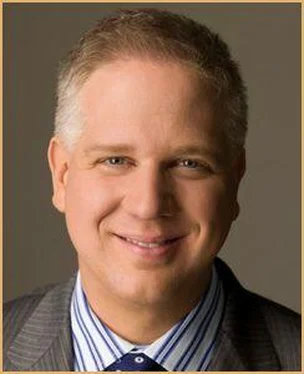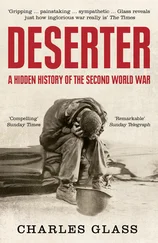General Miles thought about how much easier his life would be if he could order the Indian agents around in the same way he did his own soldiers. Unfortunately, his request that reservation duties be run by the military had been rebuffed. The Indian reservation agents remained civilian political appointees of the Office of Indian Affairs. Politicians viewed these positions as spoils and often appointed donors or their relatives to the jobs. Many were corrupt and made Miles’s job more difficult by cheating the Indians of food and materials for personal gain.
Agent Daniel F. Royer, the agent at the Pine Ridge Reservation on the Nebraska border, may or may not have been corrupt, but he was certainly, Miles thought, incompetent. Royer, who Miles knew was referred to by the Sioux as the “Young-man-afraid-of-Indians,” had sent numerous telegrams to Washington pleading for help with Ghost Dancers. One of them claimed that “Indians are dancing in the snow and are wild and crazy. We need protection and we need it now.” Royer’s hysteria had prompted the War Department to treat spiritual fervor as a major Sioux uprising.
In truth, Sitting Bull’s death was not all Royer’s fault. Settlers in the area had also persistently complained to Washington about the Ghost Dancers and newspapers around the country had panicked readers with strange stories about crazed Sioux dancing to bring about a messiah who would rid them of the white man.
The government’s response was swift and convincing. They mobilized the largest number of troops since the Civil War to head to Grand River, South Dakota. There, under the authority of General Miles, the Sioux were ordered back to their reservations. Those who complied were labeled “friendlies” and those who did not were called “hostiles.”
Once in Grand River, Miles had assumed that the legendary Chief Sitting Bull was one of those leading the Ghost Dancers. After the general’s attempt to have Buffalo Bill arrest the chief failed, McLaughlin sent a large squad of Indian police to take him into custody. That arrest had been terribly mishandled and ended with the police killing Sitting Bull and his two sons—one of whom was just twelve years old. In addition, six policemen, including their commander, Lieutenant Bull Head, were killed. The entire affair had raised the rage and indignation of both the army and the Sioux. South Dakota was now a tinderbox—and Miles was sitting right in the middle of it.
He tossed the report onto his desk just as he heard a knock at the door. “Come in.”
Major Samuel Whitside entered and Miles waved him into a chair. “Major, as you know, many of the hostile Sioux are hiding in the Badlands. For now, they appear content to stay concealed, but these hostiles may go on the warpath any day. It appears Chief Big Foot and his band are trying to join up with them.”
“That would make a large force, general,” Whitside said. “I don’t think that’s advisable.”
“Good, I’m glad you agree with me. Your orders are to take the Seventh Cavalry, find Big Foot, and escort him and his band back here to Pine Ridge. He’s broken his promises to come in before, so don’t allow him to make his own way here. You are to stay with him the whole way. Understood?”
“Yes, sir.”
“Dismissed.”
Wounded Knee Creek, South Dakota
December 28, 1890
Major Samuel Whitside stood in his stirrups to get a better view.
Big Foot’s band was moving south, along Wounded Knee Creek toward Pine Ridge. Scouts had reported that the hostile Sioux were hiding to the north in the Badlands, meaning that the rumor about the groups joining forces was likely false. The first good news of the week , Whitside thought.
As he and his troops slowly closed in on Big Foot, three Sioux warriors came forward on their horses, a white flag held high by the one on the right. Whitside and two troopers spurred their own horses and galloped out to meet the three in open land between the soldiers and the rest of the Sioux.
When the horses came nose to nose, Whitside asked, “Where is Chief Big Foot?”
“Ill,” answered the warrior in the center.
“Bring him. I won’t negotiate with anyone else.” Whitside didn’t trust Big Foot. He had a history of duplicity, and Whitside knew that negotiating with anyone other than the chief was pointless.
After a silent standoff, the warrior spoke in Lakota to the man on his left, who then rode off to join the main party. The three cavalrymen faced the two Sioux in silence until a wagon pulled up carrying Big Foot.
Whitside peeked inside. The chief was indeed ill, very ill. He looked exhausted and pale and was coughing up blood, which made it difficult for him to speak. Whitside sent one of his soldiers for the surgeon, but it looked to him like Big Foot had pneumonia.
Big Foot’s informal party consisted of about 120 men and 250 women and children. Whitside realized immediately that this was not a war party. These Sioux were a pathetic collection of refugees.
While they waited for the surgeon, Big Foot had readily agreed to be escorted to the Pine Ridge Reservation. Once the surgeon arrived, they moved slowly toward their destination, carrying Big Foot along in an army ambulance with a cot and medical supplies.
In the late afternoon, a scout reported an open swale at the intersection of several trails ahead. On inspection, Whitside found the location to be suitable to make camp for the night. He ordered army tents erected in five rows facing the Sioux tepees, which were lined up in an arc that followed the contours of a dry ravine. A small open field separated the two groups. Whitside then ordered troops placed on the backside of the ravine, on a couple knolls overlooking the camp, and along the side of the Sioux encampment.
“Sir, should we disarm them?” asked one of his officers.
Whitside thought about it for a moment. The surgeon had earlier confirmed that Big Foot indeed had pneumonia. “No. The Sioux are jumpy and suspicious after the Sitting Bull incident and their chief is ill. Let them see we mean them no harm and get comfortable with our presence. We’ll disarm them in the morning after breakfast and then continue on to Pine Ridge.”
Whitside ordered three hundred army rations distributed to the Sioux and a stove delivered to Big Foot’s tepee. Then he walked the perimeter of the two camps and was pleased, considering the circumstances, that the situation seemed to be under control.
A scout rode up and swung out of his saddle. After a crisp salute, he said, “Colonel Forsyth is just behind me with the Second Battalion. He should arrive about eight this evening to assume command.”
Major Whitside breathed a sigh of relief. This was no longer his problem.
Wounded Knee, South Dakota
December 29, 1890
Colonel James W. Forsyth had arrived the prior evening to take command of the combined force of five hundred cavalrymen, plus a company of scouts. Once he was settled, he called Major Whitside over. “Major, please explain to me why these Indians are not being properly guarded.”
“Colonel, given Big Foot’s illness, the distrust the Sioux have for us, and the fact that the band has peacefully and willingly followed us to this point, I thought it best to place troops only along the backside for now.” He swallowed hard.
“That is very logical of you, Major,” Forsyth replied. “And very naïve as well. I see you have conveniently decided to postpone disarming them. What do you plan to do when these armed Indians run off or charge us en masse in the middle of the night?”
Whitside knew well enough to remain quiet. These questions were not meant to be answered.
“Major, I want this encampment completely surrounded with troops and Hotchkiss guns. And I want it done now. We disarm them at first light.”
Читать дальше












